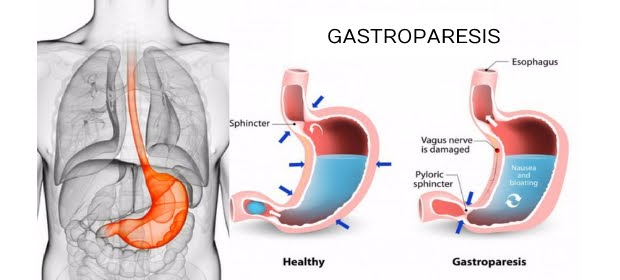Types, Facts, Advantages & Disadvantages of bariatric surgery, Dallas & Texas
Bariatric surgery is nothing but the common term collectively used for many types of weight-loss surgeries. These surgeries make changes to your digestive system to help you lose weight. Gastric bypass is the most common type of bariatric surgery and most surgeons prefer this surgery as it usually has fewer complications than other weight-loss surgeries do.
Revisional surgery is an important component of addressing weight regain and complications following primary bariatric surgery. Owing to provincial need and the complexity of this patient population, a specialized multidisciplinary revision clinic was developed.
Bariatric surgical procedures cause weight loss by restricting the amount of food the stomach can hold, causing malabsorption of nutrients, or by a combination of both gastric restriction and malabsorption. Bariatric procedures also often cause hormonal changes. Most weight loss surgeries today are performed using minimally invasive techniques
First, similar to most bariatric procedures, the newly created stomach pouch is considerably smaller and facilitates significantly smaller meals, which translates into less calories consumed.
During the past two years, a number of new minimally invasive methods for revising bariatric operations laparoscopic ally have come onto the scene. Although the risks associated with the new techniques are quite low, preliminary weight loss results are similar to those of the operations performed 20 years ago. A critique of these new approaches is found below.
Types of Biliopancreatic Diversion with Duodenal Switch
Biliopancreatic Diversion with Duodenal Switch
Biliopancreatic diversion with duodenal switch (BPD/DS) is a type of surgery to cause weight loss. It is also known as the duodenal switch. This type of bariatric surgery changes the size of your stomach and the length of your small intestine. It limits how much food you can eat, digest, and absorb.
BPD/DS is generally performed as a single procedure; however, in select circumstances, the procedure may be performed as two separate operations — sleeve gastrectomy followed by intestinal bypass once weight loss has begun.
Endoscopic Sleeve Gastroplasy
Endoscopic sleeve gastroplasty is a newer type of minimally invasive weight-loss procedure. In endoscopic sleeve gastroplasty, a suturing device is inserted into your throat and down to your stomach. The endoscopist then places sutures in your stomach to make it smaller.
ESG patients have had good weight loss results, losing 30-60% of excess weight and usually have improvement or remission of diseases like type 2 diabetes, hypertension and other obesity related comorbidity diseases.
Gastric Bypass
Gastric bypass and other types of weight-loss surgery, collectively known as bariatric surgery, make surgical changes to your stomach and digestive system that limit how much food you can eat and how many nutrients you absorb, leading to weight loss.
Gastric bypass is one common type of weight-loss surgery. During bypass surgery, the top of the stomach is changed into a small gastric pouch. A loop of your small intestine is cut, and one end of the loop is brought up and is connected to the gastric pouch.
Intragastric Balloon
Intragastric balloon placement is a weight-loss procedure that involves placing a saline-filled silicone balloon in your stomach. This helps you lose weight by limiting how much you can eat and making you feel fuller faster.
Intragastric balloons aren't the right choice for everyone who is overweight. A screening process will help your doctor see if the procedure might be beneficial for you.
Intragastric balloon is a non-surgical approach to treat obesity. It can be successful in patients who have been not been able to lose weight through traditional methods such as dieting or exercise. During the procedure, the balloon is implanted into the stomach through your mouth using an endoscope.
Facts of bariatric surgery
Sclerotherapy
Sclerotherapy is injection of a glue-like substance via an endoscope in and around the stretched anastomosis to make it smaller. Moreover, because the glue alters the tissue where it’s injected, subsequent surgical revision is likely to be more hazardous.
Endoscopic/Endoluminal Suture Plication
This refers to the narrowing of the circumference/size of the stretched anastomosis using either sutures or metal fasteners which are placed through an endoscope.
Banding the Bypass
This is the placement of a laparoscopic adjustable band above the stretched anastomosis/stoma. Subsequently, this procedure functions like a primary LAP-BAND operation.
Selecting the Right Operation
Choosing the appropriate revisional procedure is probably more important than selecting the first bariatric operation. This is because it’s crucial to know or ascertain why the first operation failed.
Advantages of bariatric surgery
1. Produces significant long-term weight loss (60 to 80 percent excess weight loss)
2. Restricts the amount of food that can be consumed
3. May lead to conditions that increase energy expenditure
Disadvantages of bariatric surgery
1. Is technically a more complex operation than the AGB or LSG and potentially could result in greater complication rates
2. Can lead to long-term vitamin/mineral deficiencies particularly deficits in vitamin B12, iron, calcium, and folate
3. Generally has a longer hospital stay than the AGB



Comments
Post a Comment